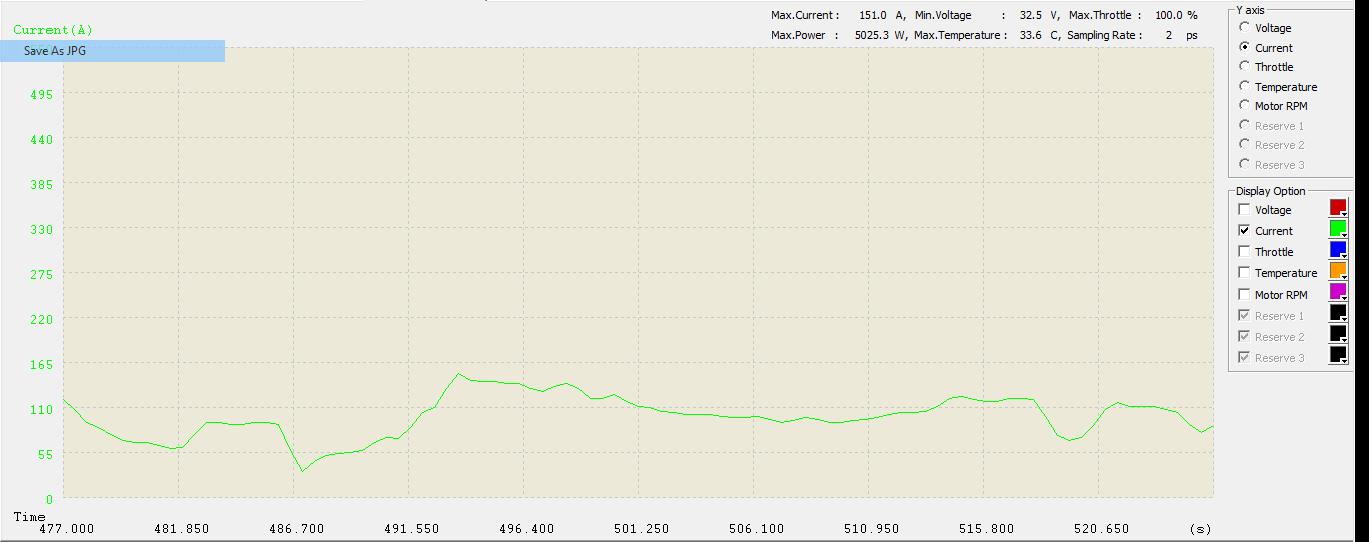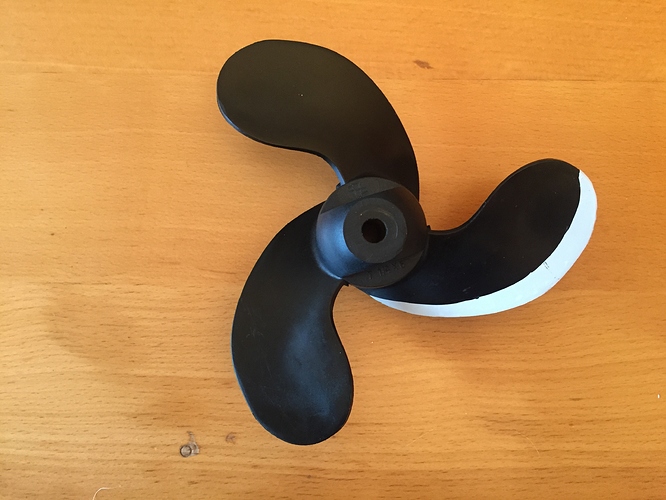Hi Alexandre,
Should you loose 1200 or 300? Let’s go through your numbers a little closer, see if we can draw any conclusion. [I apologize for making this wordy and simple; I’m not trying to be patronizing - it’s for me actually, helps me work through and proof read.]
~~~~~~~~ Rm & RPM ~~~~~~~~~~
I’m taking two points:
3000rpm @ 80A, 18,000rpm before 6:1 reduction
2600rpm @ 50A, 15,600rpm before reduction
Vin = 8s = a range of 3.0 x 8 to 4.2 x 8 = 24V… 33.6V, let’s use 3.7 x 8s for the math = 29.6V, which is close to 30V which is an easy number for math.
So our Bemf equation:
30V = Vbemf * I x Rm. (eqn 1)
[Note: I forgot to mention that Kv = 1/Ke, which is the bemf constant. Kv is useful for comparison and always the quoted number. Sorry for confusion.]
We have numbers for Bemf, so we get two points to solve for Rm.
1 - 30V = [ 18000rpm / 780kV ] + 80A * Rm
2 - 30V = [ 15600rpm / 780kV ] + 50A * Rm (albeit 70% throttle)
We get Rm = 0.0865 and Rm = 0.020. That’s too big a spread to have great confidence, and 2nd point is 70% throttle, my feeling is that the 0.0865 number is probably close but low. This is why you need a Dyno curve to really know. Let’s just run with 0.0865 ohms.
~~~~~~~ Q - Torque ~~~~~~~
You may know that the motor Kv number, measured in RPM / Volt, is 1/ Ke (generator number). But also that Ke = Kq which is the torque constant of the motor. Kq is measured in Nm / A. This is really important because when all units are in Radians/sec Mechanical Power = Q * Revolutions per sec ( in Radians.)
So 780kv (Rev/Minute per Volt ), convert to Rad/s per volt by x 2Pi/60 = 81.7rad/s per volt = 81.7A/Nm.
You are getting 0.98 Nm at the input to the gearbox, and a bit less than 5.8Nm at the output of the gearbox.
~~~~~~~ Power ~~~~~~~
Mechanical Power = Q * Rev/second (in Radians) = 5.8Nm * 3000 rpm * 2Pi/60 = 1.82kW.
1.82kW… is that enough to get foiling? Does it work? Compare this to other efoil builds and commercial efoils to get an idea.
~~~~~~~ More Power! ~~~~~~~
But if we look back at the motor spec, you can see that this is a 125A motor, with a 67V max voltage (50krpm). You are only using 80A @ 30V. This suggests you have some more head room. So how do we use it.
What is your gearbox? What is box maximum input RPM, and max torque?
If 3000rpm x 6:1 = 18krpm. I would suggest that 18,000rpm is very high for any gearbox. You could take three approaches, in combination, or singularly:
1 - Use a 4:1 or 5:1 gearing. Your shaft speed goes to 4500rpm or 3600rpm respectively. This means the prop is going to push back harder, requires more Torque, requires more Amps, gets you up near that 125A limit. How much depends on Prop Kq, operating conditions, etc.
2 - Use a lower Kv motor. More torque per revolution, more torque at the shaft. Add voltage up to 67V, keep the input RPM as high as the gearbox allows. Watch out for gearbox torque limit. Use Rm = 0.0865 and eqn 1 to estimate RPM under 125A full power, and any new input voltage. We can make a graph for this, if I have time later I will, but it’s just a straight line.
3 - Use two motors  Sometimes more is more.
Sometimes more is more.

 Sometimes more is more.
Sometimes more is more.

